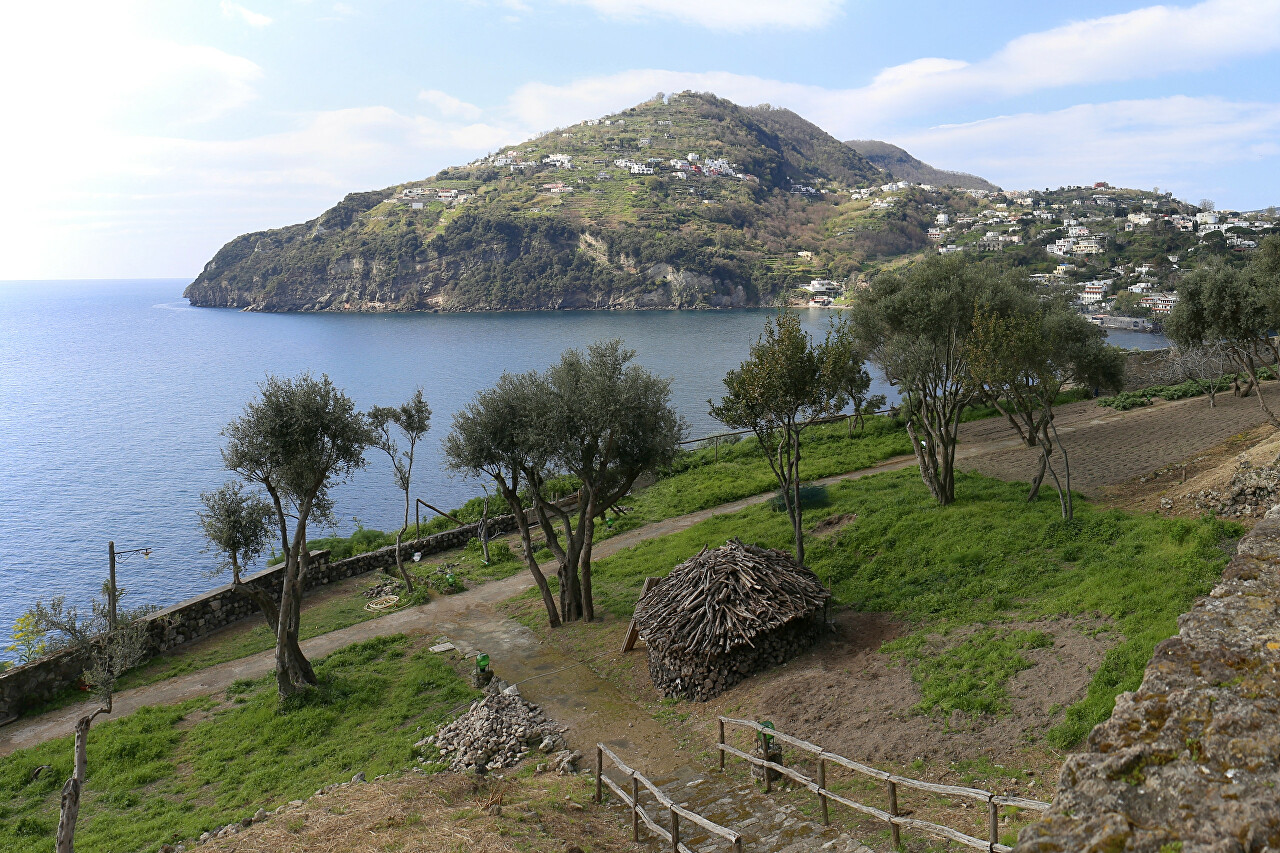Village of St. Nicholas, Aragonese Сastle
Walking along the terraces laid out on the site of the ancient Temple of the Sun, which has sunk into oblivion, I found a group of stone buildings that are not marked on the fortress map.

The sign says that this is the village of St. Nicholas (Borgo di San Nicola on the map). According to some sources, this settlement appeared very long ago, no later than the 12th century, as there are records of the parish church of St. Nicholas, which is now known as the church of the Madonna della Libera (I will tell you about it in the next article).
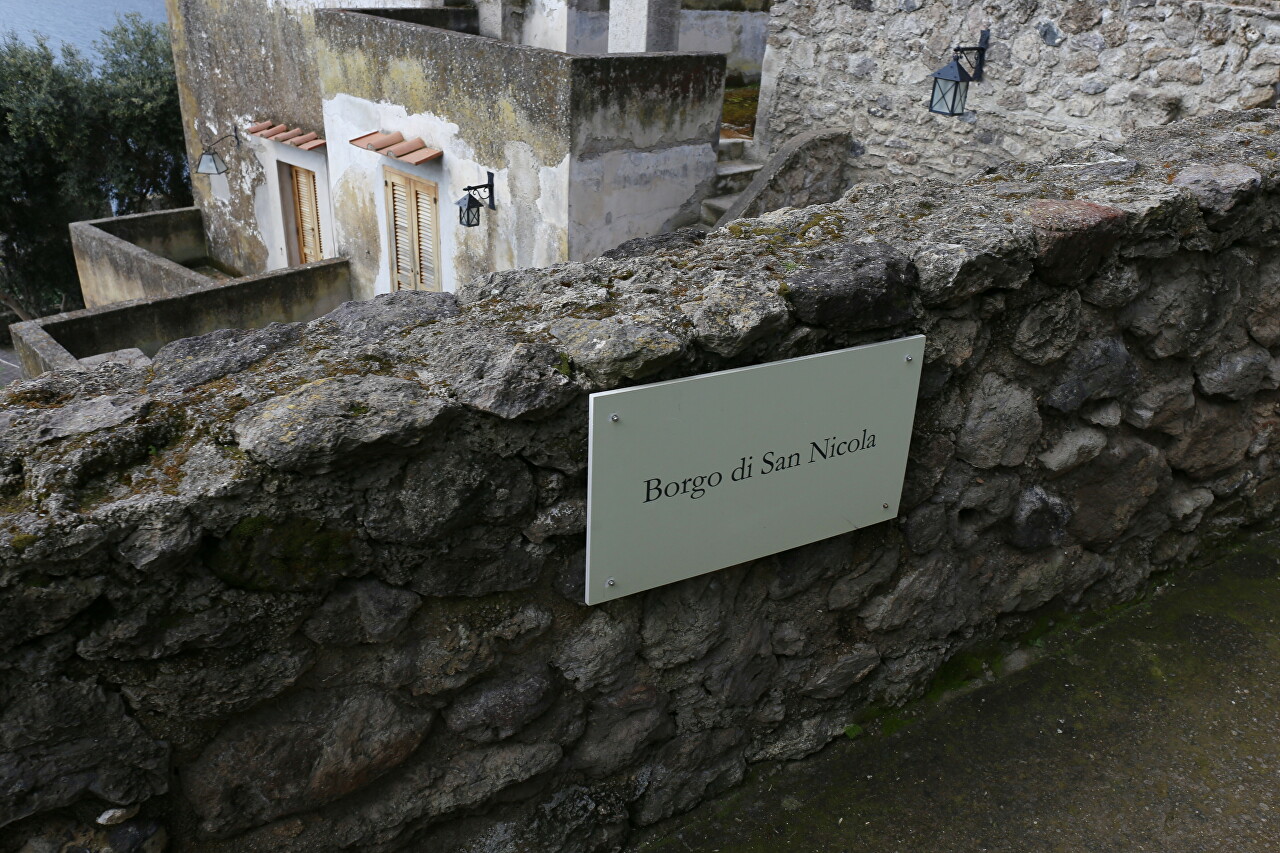
It is also known that the village sheltered residents of the eastern part of the island, who sought refuge from the lava flows during the strongest eruption of the Monte Epomeo volcano in 1301.
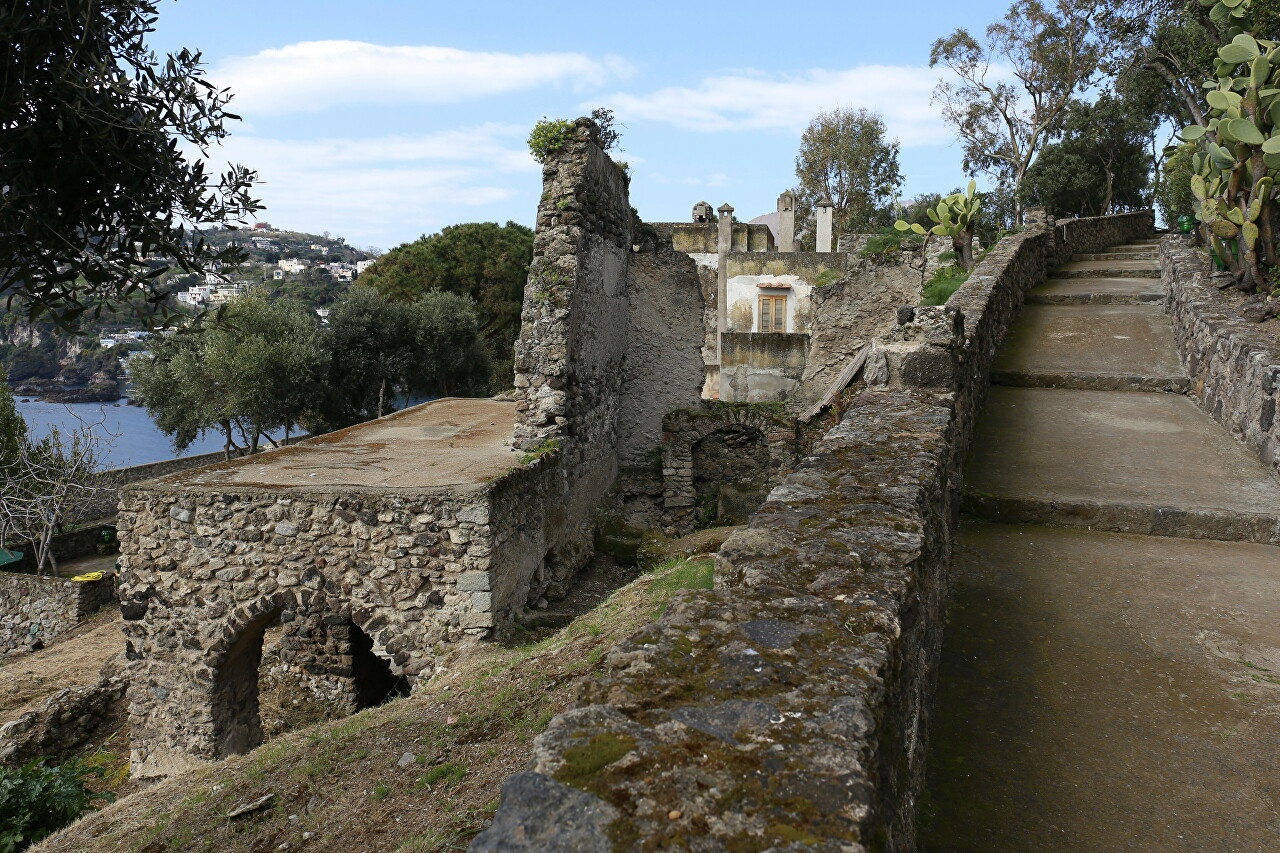
Only some fragments of the medieval buildings remain, and what we see now leaves no doubt that this is a new model.
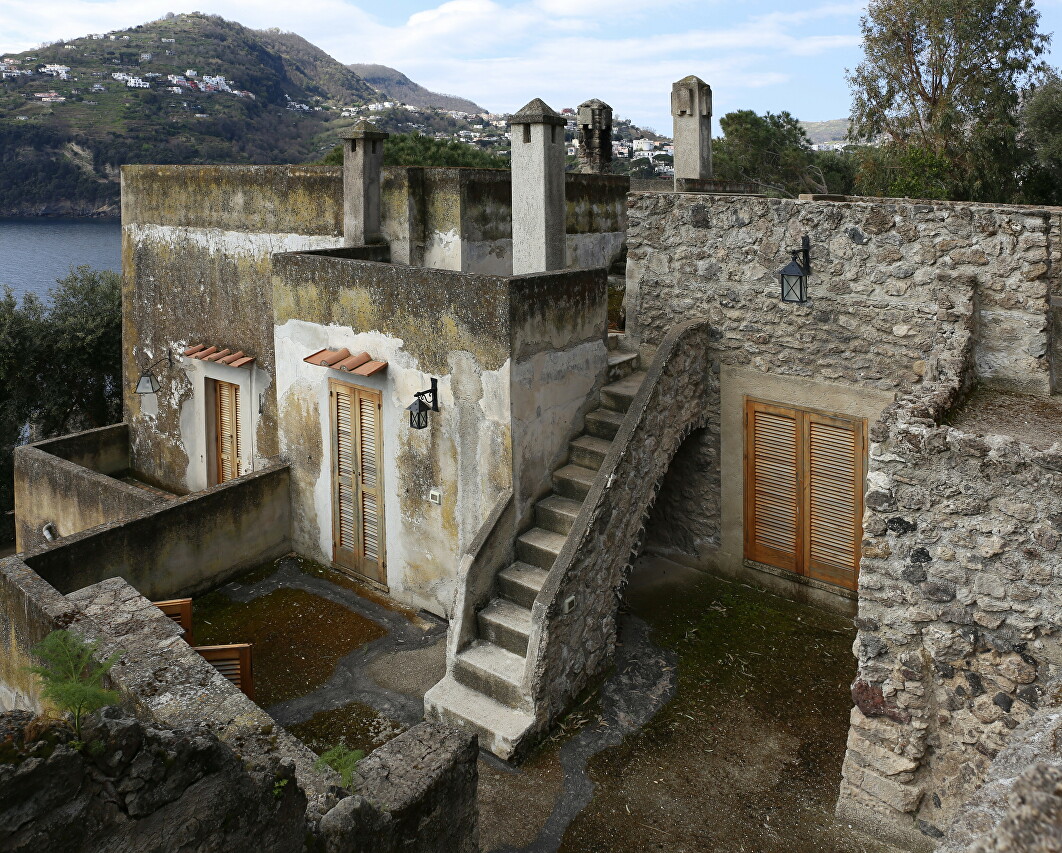
I have not been able to find out what is in these buildings made of natural stone, although most likely it is just facing. There were no forbidding signs, and I walked freely down the stone stairs to the courtyard.
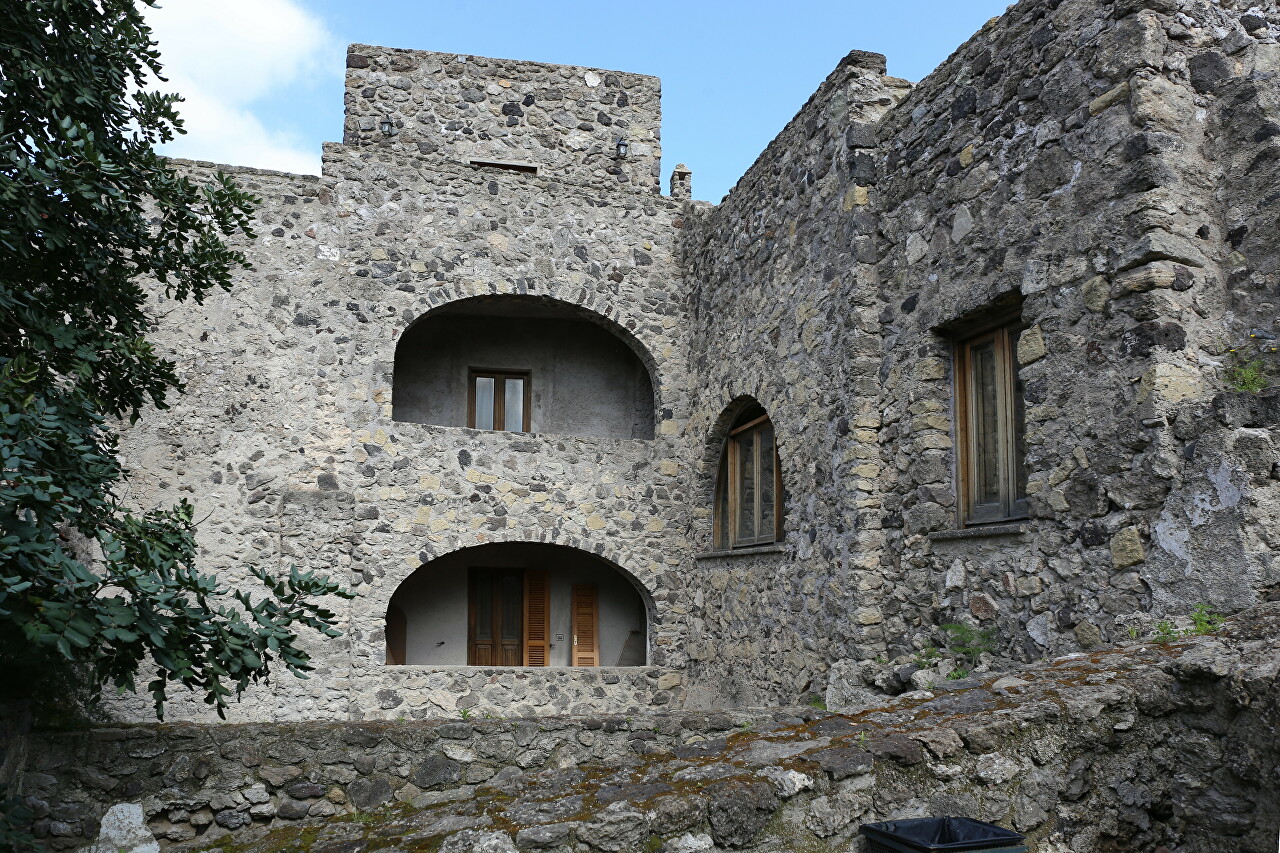
The courtyard ended in a stone-paved area with a stone fence, beyond which I saw vegetable gardens. In some periods of the Middle Ages, up to two thousand people lived in an Aragonese Castle, so every piece of land suitable for agriculture was cultivated. Now the island is a popular tourist destination, and it is amazing that there are well-groomed plantations here.
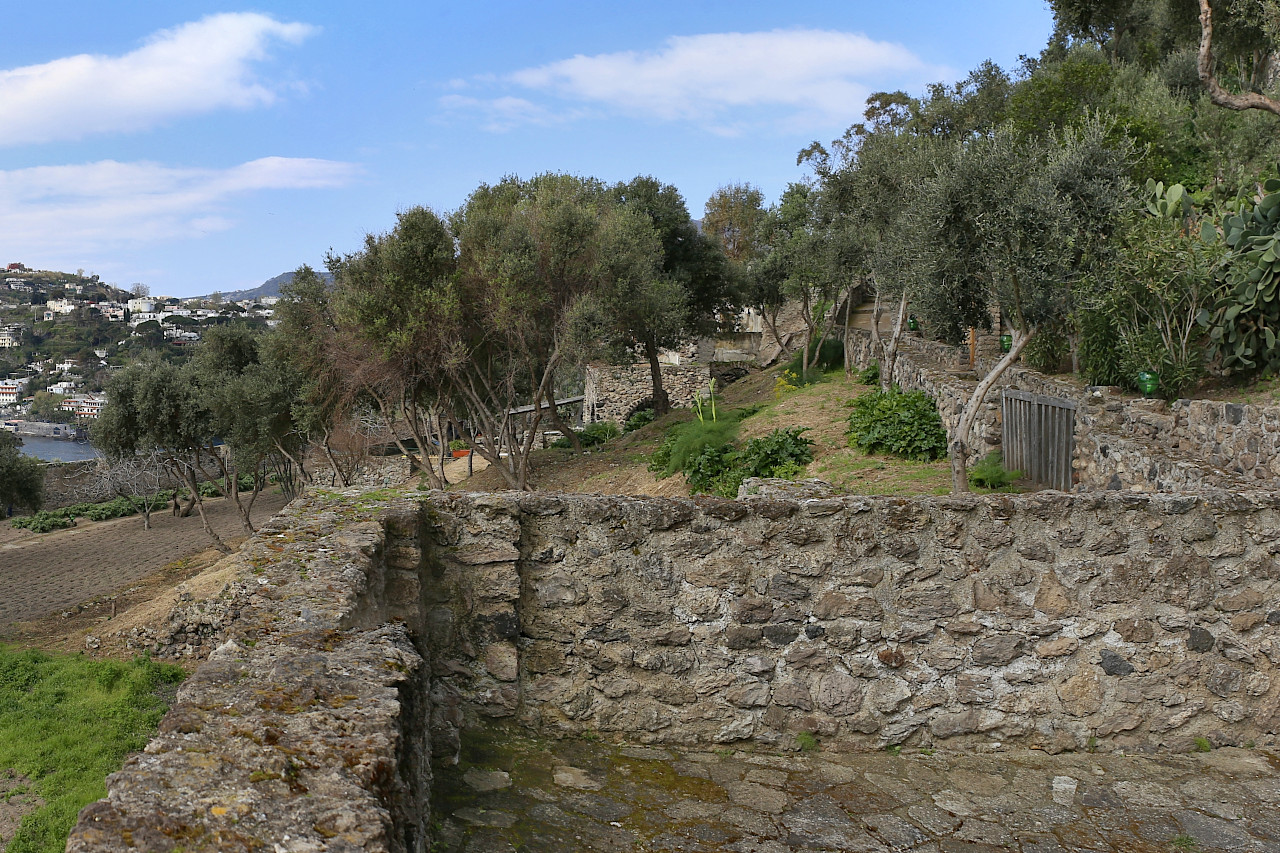
The site offers views of the southeastern tip of Ischia Island, formed by another volcanic cone, Monte Sopra.
